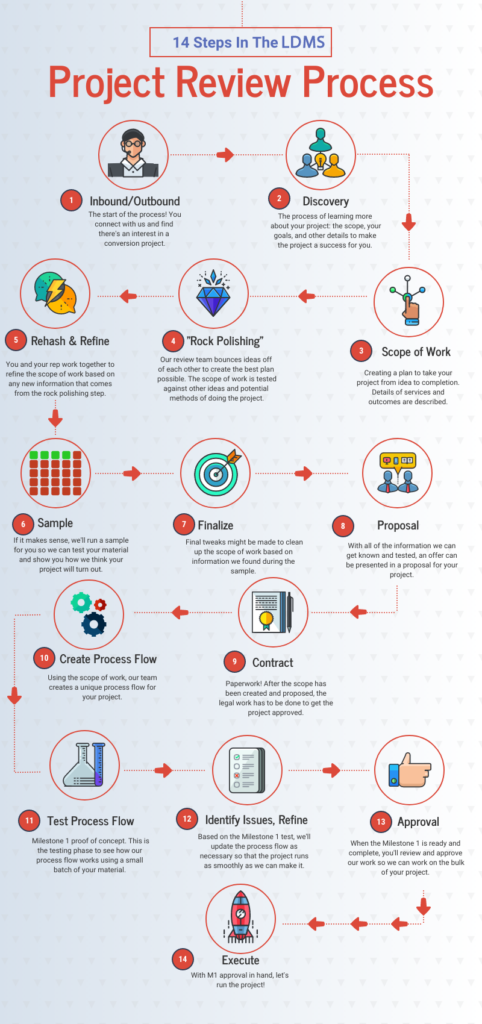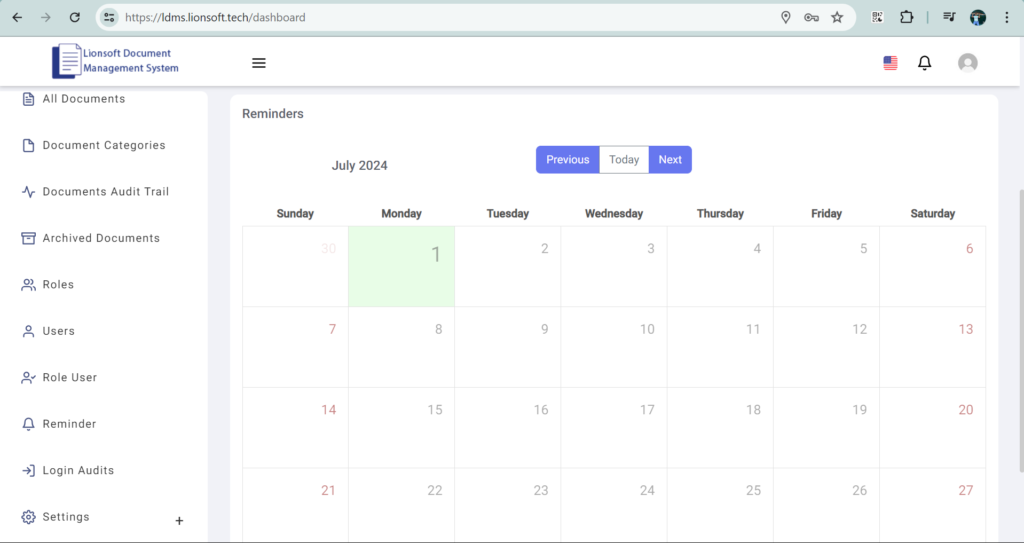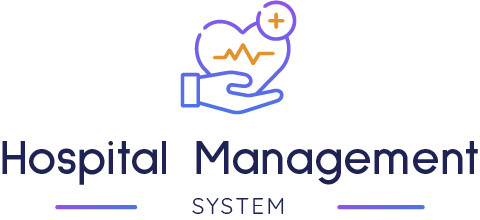Document Scanning & Digital Conversion Solutions
Turn your paper into text-searchable digital files
For businesses and government agencies with large paper archives, our document conversion services can give you instant-access digital files that can be retrieved with just a few clicks. We’ll handle every aspect of the document scanning project from on-site or pick-up and delivery to preparation, scanning, data extraction, and media delivery or document hosting.
Record conversion is important, but the process to scan and capture the images and data from those records and convert them into easy-to-retrieve digital files is where we really provide value.
Our Approach To Document Scanning
- We scan documents of all sizes, types, and security levels.
- Technology is used to automate repetitive actions and to create a streamlined approach to your project.
- Tasks are typically separated between preparation staff and scanning staff to create repeatable conditions.
- Special equipment for handling of older materials and bound volumes.
- Multiple image output formats available: PDF, PDF/A, JPG, TIFF (uncompressed or Group IV).
- Media delivery options include USB drives, FTP (file transfer protocol) and secure FTP, hosted application access.
The LDMS Project Review Process: Creating Your Digital Conversion Solution
Get a glimpse into the internal process we use to take a digital conversion project from an idea to a delivered solution.
If you’re just starting your research and are deciding who you want to partner with, this’ll give you a look into how we do business.
Our Project Review Process
The LDMS Project Review Process is our 14-step method of taking your project from idea to reality. Fourteen steps sounds like a lot, but most of it is internal and you won’t have to get involved in the nitty-gritty stuff. The process also isn’t set in stone: although most of our projects do go through every step, it’s normal for other project so skip steps or go out of order. That’s just the nature of the business and we’re flexible!
Our sales team is usually the first contact you’ll have with LIONSOFT. Once you get in touch with us you’ll go through an initial project discussion with a rep to create a general scope of work and find out if the project seems to be a good fit for the both of us.
Your project then goes through our “Project Review” process, a meeting where a group of our operations staff get together to review sales opportunities. We offer ideas and suggestions to the sales rep so that we accept projects that match our strengths and to ensure that we’re able to deliver the services our customers need. This is a completely internal meeting, meaning you won’t have to be involved during this part – it’s almost like a secondary sales process because our reps are “selling” your project to our operations team!
Once your project has been reviewed, refined, and approved internally, the next major step is starting the project with what we call the Milestone 1 Proof of Concept, a test phase to ensure the scope of work we’ve created will actually work.
Who’s involved in the project review?
The core team for our project review includes members from software, operations, sales, and management. This cross-section gives us the ability to bounce ideas around and have diverse opinions so that we create the best possible solution for the projects we’re evaluating.
We also bring in other employees if the project requires specialized knowledge or skills; examples of these ad hoc members include our coders, scanner-operators, and data entry employees.
Why do we do this?
Short answer:
To make sure we accept projects that we’ll be able to execute successfully for our clients.
Longer answer:
To avoid a gap growing between what is being sold and what our production staff can actually do. To re-align everything we do these project reviews, and we’ve seen a big jump in successful projects and less rework.
And for you, our (future) customer, we want to make sure you get what you need, not just what you want. We bring a lot of project knowledge and experience to the table, and sometimes our customers have ideas that just won’t play out well down the road; it’s our job to make sure we offer guidance and recommendations to create positive outcomes. You may have a particular position or strategy in mind when you think about a digital solution; our staff can help you focus on the end goal and offer alternate methods to achieve that goal and provide additional value to you.
The 14-Step LIONSOFT Project Review Process
The infographic below lays out all 14 steps in our review process. There’s additional information about each step below the infographic if you’re interested in learning more.

Step 1: Inbound/Outbound Project Initiation
The two ways we’ll start our relationship together are either you get in touch with us, or we initiate contact with you. That’s it! If you get in touch with us it might be at a trade show or giving us a call based on a referral from a friend of yours. Or we may call you out of the blue or send you an email about projects we can help with.
Whatever way we make the connection, this is always the first step in the sales process. If we get connected in some way, we’ll put you in touch with one of our reps we think is the best fit and they’ll take you to the next step, Discovery.
Step 2: Discovery
Once we’ve gotten in touch with each other and a digital conversion project’s been mentioned, the discovery step begins. We’ll ask you questions about the size of the project, what type of material it consists of, what the overall goal is, how you want the digital files organized, what your timeline is, and so on.
This is really the part where we feel each other out and decide if we want to move on to the next step and really get grinding on details. Some projects just aren’t for us for various reasons, or you may decide that based on what we’re able to offer isn’t right for you. That’s okay because we’re not a one-size-fits-all company and sometimes we’re not the best choice.
Step 3: Initial Scope of Work
The initial scope of work (SOW) is what our rep brings to the table to kick off the Project Review meeting. The SOW covers what you and they spoke about, what the goal of your project is, which services we’ll be providing, and how much it’ll cost.
The goal for our sales team is to come in with a great SOW that covers all the requirements you asked for, touches on any bumps and roadblocks we may encounter during the project, and lays out the path from start to finish once we decide to partner up on your project.
Step 4: “Rock Polishing”
Assuming that the SOW wasn’t perfect (it’s hard to be perfect), there’ll be some refinement to the initial scope. Let’s call this “rock polishing” because the rep will get bounced around and feel like they’re in a cement truck tumbler, but at the end of the review the objective is to have a shiny diamond of a project!
This part is where the Project Review team fires questions at the sales rep, asking about “why this?” or “why not that,?”, covering anything from scanning method to indexing, image delivery format, and pricing. This step of the Review is tough for any sales person, regardless of experience or tenure: the questions come hard, fast, and many, all with the goal of creating a project that’s both good for our company and good for you.

Step 5: Refine the Scope of Work
If our rep comes back to you with additional questions about your project, take this as a positive! It means that our team found some holes in the plan and we’re catching them before we start your project, preventing issues down the road once the project is underway.
We try to limit the back and forth with you about your project as much as we can, but if you find yourself providing more information than you thought you’d need to, we want you to know it’s because we’re crafting a plan for you that ends well, even if it takes a little longer up front.
Step 6: Sample
After the initial SOW and (maybe) some further discussion to firm up details about your project, you might be interested in having us run a sample test for you. Samples normally include a few units from your overall project, such as a box of paper records, and so on.
What we normally like to do is use the current scope of work and run your material through a sample process flow, and then check out the results. We can take a look at the quality of the digital images we create, the indexing layout, any issues that popped up during the sample, and so on. Once we have this information we can move to the next step and finalize the scope of work and get you our best offer based on what we know.
Step 7: Evaluation and Finalization
At this point we should have plenty of information for our sales rep to put together the finalized scope of work and our offer. If there was a sample, we may do a little more investigation if anything odd came up, but if the sample confirmed our assumptions about the project then we wouldn’t have to revisit anything. Once our review team and sales person are all on board, we’ll approve the project based on understood scope and pricing and move on!
Once we get to this point the project review ends. Occasionally a project will get approved but then come back through the review because a customer finds some new information or material that has to be added, or the length of time between approval and the actual project moving forward is so long (we’ve seen projects finally show up after being approved over a year prior). If that’s the case, we may have a quick recap to make sure we’re all still on the same page.
Step 8: Proposal
Once the Project Review team has batted around your project and come up with all the brilliant ideas we can do to make it a slam-dunk project, our rep will put together a proposal and send it over to you. This’ll include some general assumptions about your project based on what we know so far, the scope of work to describe what services we’ll actually be providing, and associated cost items.
The proposal may be revised and refined, but it’s usually pretty solid once we’ve run through the Project Review process. After you’ve reviewed the proposal and agree with the scope and pricing, you’ll move on to the contracting!

Step 9: Contract
Who doesn’t love reading contracts?! Well, probably everybody. Contracts aren’t exactly exciting, and with all the legalese used in them they can cause headaches a-plenty. But they’re still necessary to get your project off the ground and as long as everyone involved is cordial and collaborative, they can be finished up almost painlessly.
After you’ve reviewed, refined, and revised the proposal our rep sent to you, it’s time to get that scope of work and pricing into a contract! We love using our standard agreement but we also know that you probably have your own contract that has to be used. Either way is fine – the real key is to get the contracting started early, even possibly before the scope of work and proposal is finalized. If you’ve gotten to the point where you know you want to work with us, it’s good to get ahead of the game and start the contract review so that the legal and admin stuff doesn’t hold up actually starting the project for too long.
Instead of going into more detail here, check out our article about contracts for more of our opinions and ideas. Yes, we actually wrote an article about contracts.
Step 10: Creating the Project Process Flow
We revere our project process flows: they’re the frame that holds our projects together and guides our team from start to finish. Jobs have gotten more complicated as technology continues to advance and expand, and we use our process flows to keep us on track and focused.
Once the scope of work is approved and the project has gotten the green light from both you and LIONSOFT, our Project Architect will create the initial process flow. Our Project Architect is our primary process flow creator and has the experience of crafting projects from scratch, so she takes the first swing at building any new process flow.
Step 11: Testing the Process Flow
Once your process flow is created, we test it by running a small batch of your material so we can test the steps we put in place and see how they work out. If you have a paper scanning project, we’ll test a box or two. The critical thing is to try and test a good cross-section of your overall project so we can see how different parts of the whole may turn out.
Step 12: Identify and Resolve Issues, Refine Process Flow
It’s rare when we don’t find an issue with a project. We just don’t know what we don’t know before we get started on a project, so the Milestone is helpful to surfacing issues or potential issues early.
If we find a problem with your material or a step in the scope of work isn’t possible due to some unforeseen circumstance, we’ll flag the problem and get in touch with you to review it. Sometimes our team can solve an issue through their creativity, but sometimes the problem requires discussion with you to see how we can move forward.
Once the issue’s been identified and discussed with you, our Project Architect will rework the process flow based on the new information and we’ll re-test the process flow.
Step 13: Approval
When your test batch has successfully gone through the process flow, our rep will reach out to review the Milestone to show you what we’ve put together and ask for your approval.
This is a critical step for our project team: once we have approval we’ll be ready to go full steam ahead on the bulk of your project, so if you need any changes or have concerns about the final product, now’s the time to let us know!
If all’s well and you’re happy with the Milestone 1 (the quality of the digital images, the indexing/organization of your files, and so on), give us the thumbs up and we can get started on your project.
Step 14: Execution – Run The Project
Blast off time! Now that we have your approval we’re ready to move on with the rest of your project. We’re built for large-volume jobs, so we always like to get your M1 approval and start on the main portion of your material.
Once we have approval for the M1, our Project Architect turns over your project to one of our Project Managers. Our project managers are tasked with:
- using the approved process flow to run the project
- tweak the process flow to allow for any requested or required changes in the project
- communicate with and update our rep who brought the job in
- communicate with other people on an as-needed basis (they may get in touch with you with questions or updates)

Why Go Through All This Work?
It’s important that we get your project right the first time, both for our and your sake. We don’t want to redo it because of a lapse in expectations, or a mistake in the scope of work. Let’s take small steps and make sure we’re doing the right thing throughout the project so that you’re happy at the end and you can immediately use what we deliver.
Next Steps
Reach out to us today! Click the “Get Your Quote” button below, fill out the form, and we’ll quickly reply to you to discuss your project.
Welcome to Lionsoft Document Management System (LDMS)
Transforming the Way You Manage Documents
In today’s fast-paced business environment, efficient document management is crucial for success. Introducing the Lionsoft Document Management System (LDMS) – a comprehensive, web-based solution designed to streamline your document management processes, enhance security, and ensure compliance. Discover how LDMS can revolutionize the way you manage, store, and access your business documents.
Why Choose LDMS?
Centralized Document Management
Say goodbye to the chaos of scattered files. With LDMS, all your documents are securely stored and easily accessible in one centralized platform. Whether it’s contracts, reports, or project files, find everything you need in seconds.
Enhanced Security
Your documents are your business’s lifeline. LDMS offers robust security features, including encryption, role-based access controls, and comprehensive audit trails. Rest assured, your sensitive information is protected from unauthorized access and breaches.
Regulatory Compliance
Stay ahead of regulatory requirements with LDMS. Our system is designed to help you comply with industry standards such as GDPR, HIPAA, and more. Implement document retention policies and maintain detailed audit logs to ensure compliance and avoid legal penalties.
Boosted Efficiency
LDMS automates routine tasks such as document approvals, reminders, and workflow management, freeing up valuable time for your team. Enhance productivity and reduce operational costs with our efficient, user-friendly interface.
Key Features of LDMS

Document Versioning
Never lose track of changes. LDMS allows you to upload multiple versions of a document, maintain a clear revision history, and restore previous versions when needed. Perfect for collaborative projects and maintaining document integrity.
Audit Trails
Maintain complete visibility over your document’s lifecycle. LDMS records every action taken on a document, including who accessed, edited, or shared it. This feature is crucial for maintaining accountability and transparency within your organization.
Cloud Integration
Enjoy the flexibility and reliability of cloud storage with seamless integration with Amazon S3. Store your documents locally, in the cloud, or both. Our hybrid storage options ensure your data is always accessible and secure.
Multilingual Support
Operate globally without language barriers. LDMS supports multiple languages, allowing your diverse workforce to use the system in their preferred language. Customize the user interface to reflect your organization’s unique requirements.
Automated Workflows
Streamline your business processes with LDMS’s automated workflows. From document approvals to recurring reminders, our system ensures tasks are completed on time and efficiently, enhancing overall productivity.
Industries We Serve
- Legal
Effortlessly manage case files, contracts, and legal documents. Ensure compliance and enhance security with our advanced features tailored for legal professionals.
Pain Points:
- High volume of paperwork
- Need for secure document storage
- Compliance with legal regulations
Benefits of LDMS:
- Centralized Storage: Easily manage case files, contracts, and legal documents in one secure location.
- Secure Access Controls: Ensure that only authorized personnel can access sensitive legal documents.
- Audit Trails: Track who accessed or modified documents, crucial for maintaining legal integrity.
- Document Versioning: Maintain a clear history of revisions to legal documents and contracts.
Categorization and sub-categorization for document organization in LDMS for Legal Industry
Case Files
- Criminal Cases
- Civil Cases
- Family Law
- Corporate Law
- Intellectual Property
Contracts
- Client Contracts
- Vendor Agreements
- Employment Contracts
- Non-Disclosure Agreements (NDAs)
Legal Research
- Statutes and Regulations
- Case Law
- Legal Articles
Client Correspondence
- Email Communications
- Letters
- Meeting Notes
Court Documents
- Pleadings
- Motions
- Orders
- Judgments
Billing and Invoices
- Client Invoices
- Payment Receipts
- Expense Reports
2. Healthcare
Securely store and manage patient records and medical files. Comply with HIPAA and other regulations while improving administrative efficiency.
Pain Points:
- Managing patient records and medical files
- Ensuring data privacy and HIPAA compliance
- Efficient information retrieval
Benefits of LDMS:
- Regulatory Compliance: Help ensure compliance with HIPAA and other healthcare regulations.
- Secure Storage: Encrypt patient records and control access to sensitive information.
- Automated Workflows: Streamline processes such as patient record updates and approvals.
- Audit Trails: Keep detailed logs of who accessed or modified patient records.
Categorization and sub-categorization for document organization in LDMS for Healthcare Industry
Patient Records
- Medical Histories
- Treatment Plans
- Lab Reports
- Imaging Results
Administrative Documents
- Appointment Schedules
- Insurance Claims
- Billing and Invoices
Compliance Documents
- HIPAA Compliance
- Regulatory Reports
- Audit Logs
Research and Development
- Clinical Trials
- Research Papers
- Grant Proposals
Staff Records
- Employee Files
- Training Documents
- Licenses and Certifications
3. Financial Services
Handle sensitive financial documents with the highest security standards. Ensure compliance with financial regulations and maintain detailed audit logs.
Pain Points:
- Handling sensitive financial documents
- Ensuring compliance with financial regulations
- Need for robust security measures
Benefits of LDMS:
- Enhanced Security: Encrypt financial documents and implement strict access controls.
- Compliance: Maintain compliance with financial regulations such as SOX and GDPR.
- Audit Trails: Track document access and modifications for accountability.
- Document Versioning: Manage multiple versions of financial reports and statements.
Categorization and sub-categorization for document organization in LDMS for Financial Services
Client Documents
- Account Agreements
- Financial Statements
- Tax Documents
- Investment Portfolios
Regulatory Compliance
- KYC Documents
- AML Reports
- Audit Trails
Transaction Records
- Payment Receipts
- Bank Statements
- Transaction Logs
Internal Documents
- Policies and Procedures
- Employee Records
- Internal Memos
4. Education
Organize student records, course materials, and administrative documents. Enhance collaboration among staff with our user-friendly platform.
Pain Points:
- Managing student records and administrative documents
- Ensuring data security and privacy
- Facilitating collaboration among staff
Benefits of LDMS:
- Centralized Document Repository: Store student records, course materials, and administrative documents.
- Access Control: Ensure that only authorized staff can access sensitive student information.
- Collaboration Tools: Enable teachers and administrative staff to collaborate on documents.
- Multilingual Support: Cater to diverse student and staff populations with support for multiple languages.
Categorization and sub-categorization for document organization in LDMS for Education Sector
Student Records
- Enrollment Forms
- Academic Transcripts
- Attendance Records
- Disciplinary Records
Course Materials
- Syllabi
- Lecture Notes
- Assignments
- Exams
Administrative Documents
- Staff Records
- Financial Reports
- Compliance Documents
Research Papers
- Faculty Publications
- Student Theses
- Research Proposals
5. Government
Manage public records and documents securely. Ensure transparency and accountability with comprehensive audit trails and compliance features.
Pain Points:
- Managing vast amounts of public records and documents
- Ensuring transparency and accountability
- Complying with regulatory requirements
Benefits of LDMS:
- Document Organization: Categorize and subcategorize public records for easy retrieval.
- Audit Trails: Maintain detailed logs of document interactions for transparency.
- Compliance: Help meet regulatory requirements for document management and public records.
- Secure Access: Implement role-based access controls to safeguard sensitive information.
Categorization and sub-categorization for document organization in LDMS for Government Agencies
Public Records
- Birth and Death Certificates
- Marriage Licenses
- Property Records
Policy Documents
- Legislation
- Regulations
- Policy Papers
Internal Correspondence
- Memos
- Emails
- Meeting Minutes
Financial Documents
- Budgets
- Financial Reports
- Audit Reports
6. Manufacturing and Engineering
Keep track of technical documents and specifications. Enhance collaboration and version control for design documents.
Pain Points:
- Managing technical documents and specifications
- Ensuring version control for design documents
- Facilitating collaboration among teams
Benefits of LDMS:
- Version Control: Keep track of revisions to technical documents and specifications.
- Centralized Storage: Store design documents, blueprints, and specifications in one location.
- Collaboration Tools: Enable teams to collaborate on documents in real-time.
- Secure Access: Protect sensitive design and engineering documents with robust access controls.
Categorization and sub-categorization for document organization in LDMS for Manufacturing and Engineering
Technical Documents
- Design Blueprints
- Engineering Specifications
- Product Manuals
Compliance Documents
- Safety Reports
- Quality Assurance Reports
- Regulatory Compliance Documents
Project Documents
- Project Plans
- Progress Reports
- Cost Estimates
Inventory Records
- Raw Material Logs
- Finished Goods Records
- Supplier Contracts
7. Real Estate
Simplify the management of contracts, property documents, and client information. Ensure compliance and secure document sharing.
Pain Points:
- Handling contracts, property documents, and client information
- Ensuring compliance with real estate regulations
- Efficient document retrieval and sharing
Benefits of LDMS:
- Document Management: Store and organize contracts, property documents, and client information.
- Compliance: Ensure compliance with real estate regulations.
- Audit Trails: Track document interactions for accountability.
- Secure Sharing: Share documents securely with clients and stakeholders.
Categorization and sub-categorization for document organization in LDMS for Real Estate
Property Documents
- Title Deeds
- Lease Agreements
- Property Surveys
Client Records
- Buyer and Seller Information
- Transaction Histories
- Client Correspondence
Financial Documents
- Mortgage Agreements
- Payment Receipts
- Expense Reports
Marketing Materials
- Property Listings
- Promotional Brochures
- Advertising Campaigns
8. Retail and E-commerce
Efficiently manage vendor contracts, inventory records, and customer information. Automate workflows and enhance document security.
Pain Points:
- Managing vendor contracts, inventory records, and customer information
- Ensuring data security and compliance
- Facilitating efficient workflows
Benefits of LDMS:
- Centralized Document Storage: Store vendor contracts, inventory records, and customer information.
- Secure Access Controls: Protect sensitive business information with robust access controls.
- Automated Workflows: Streamline processes such as inventory updates and contract renewals.
- Audit Trails: Maintain logs of document interactions for accountability.
Categorization and sub-categorization for document organization in LDMS for Retail and E-commerce
Inventory Records
- Stock Levels
- Supplier Contracts
- Product Specifications
Sales Documents
- Sales Orders
- Invoices
- Customer Receipts
Marketing Materials
- Campaign Plans
- Promotional Content
- Customer Feedback
Compliance Documents
- Tax Documents
- Regulatory Filings
- Audit Reports
Plus many more industries> Telecommunications, Non-Governmental Organizations (NGOs), Insurance Companies, Hospitality Industry, Media and Publishing, Construction Companies, Logistics and Transport
Lionsoft Document Management System (LDMS) offers tailored solutions for a wide range of industries by addressing their specific pain points. Whether it’s ensuring compliance, enhancing security, improving collaboration, or streamlining workflows, LDMS provides the tools needed to efficiently manage documents and drive productivity.
Try LDMS Today
Experience the future of document management with Lionsoft Document Management System. Sign up for a free trial or request a demo to see how LDMS can transform your business operations. Join the ranks of satisfied customers who have streamlined their document management processes and boosted their productivity with LDMS.
Contact Us
Have questions or need more information? Reach out to our friendly support team. We’re here to help you every step of the way. Tap the whatsapp icon on the bottom right of this screen or email us on [email protected]
Call to Action:
“Get Started Today – Transform Your Document Management with LDMS!”
With Lionsoft Document Management System, managing your documents has never been easier, more secure, or more efficient. Explore our features, understand our benefits, and take the first step towards a more organized and productive business environment.
Other Management Systems to enhance your business effeciency.



